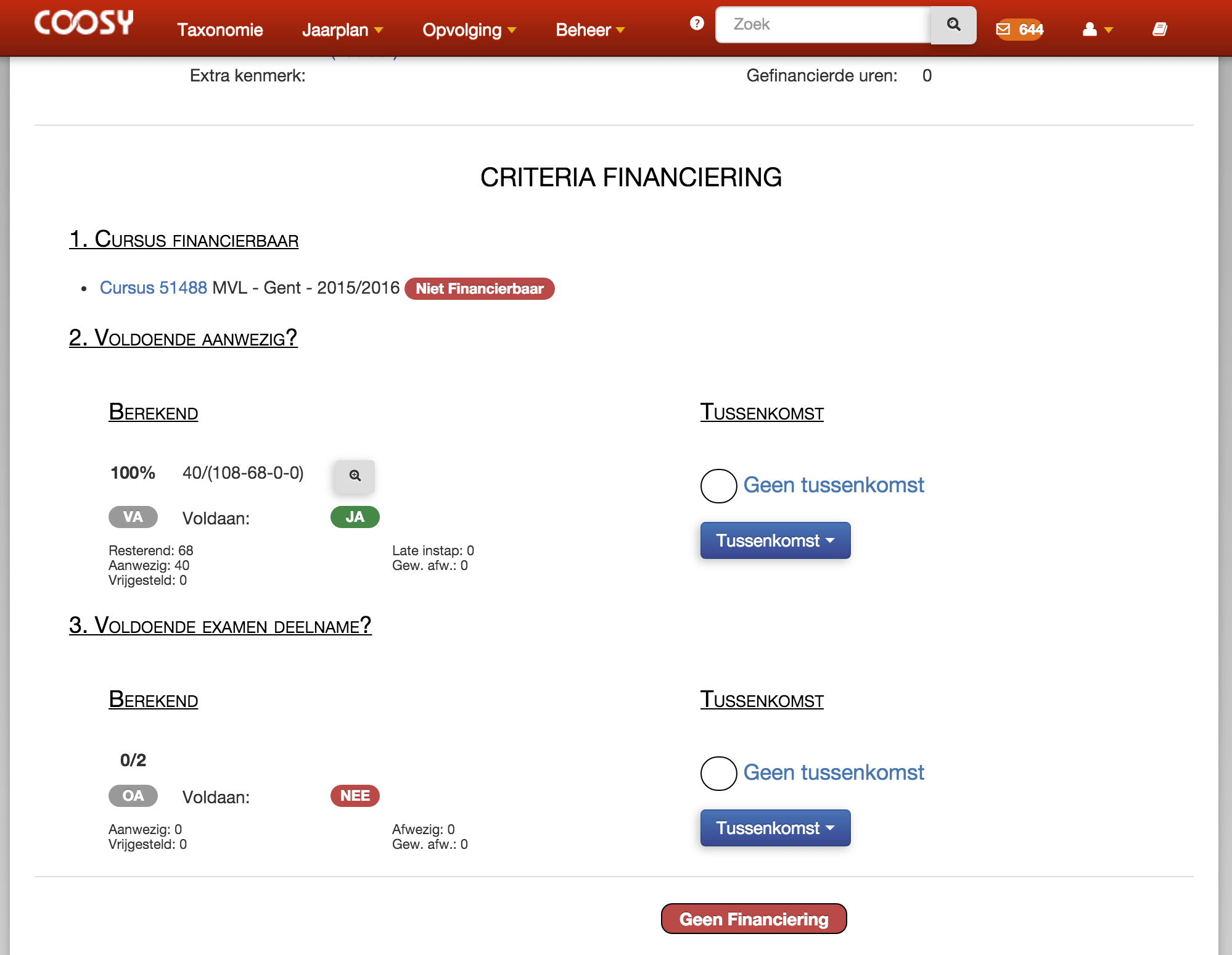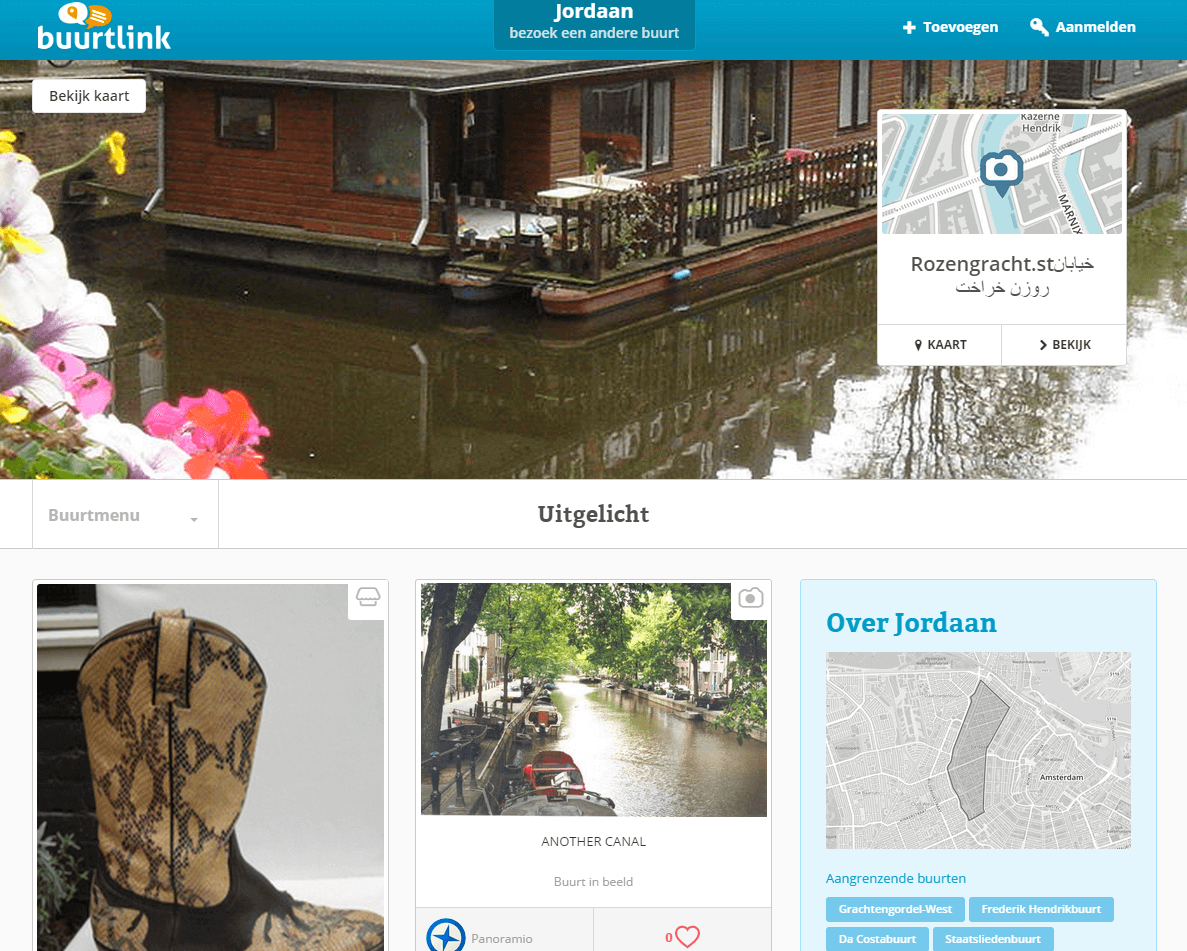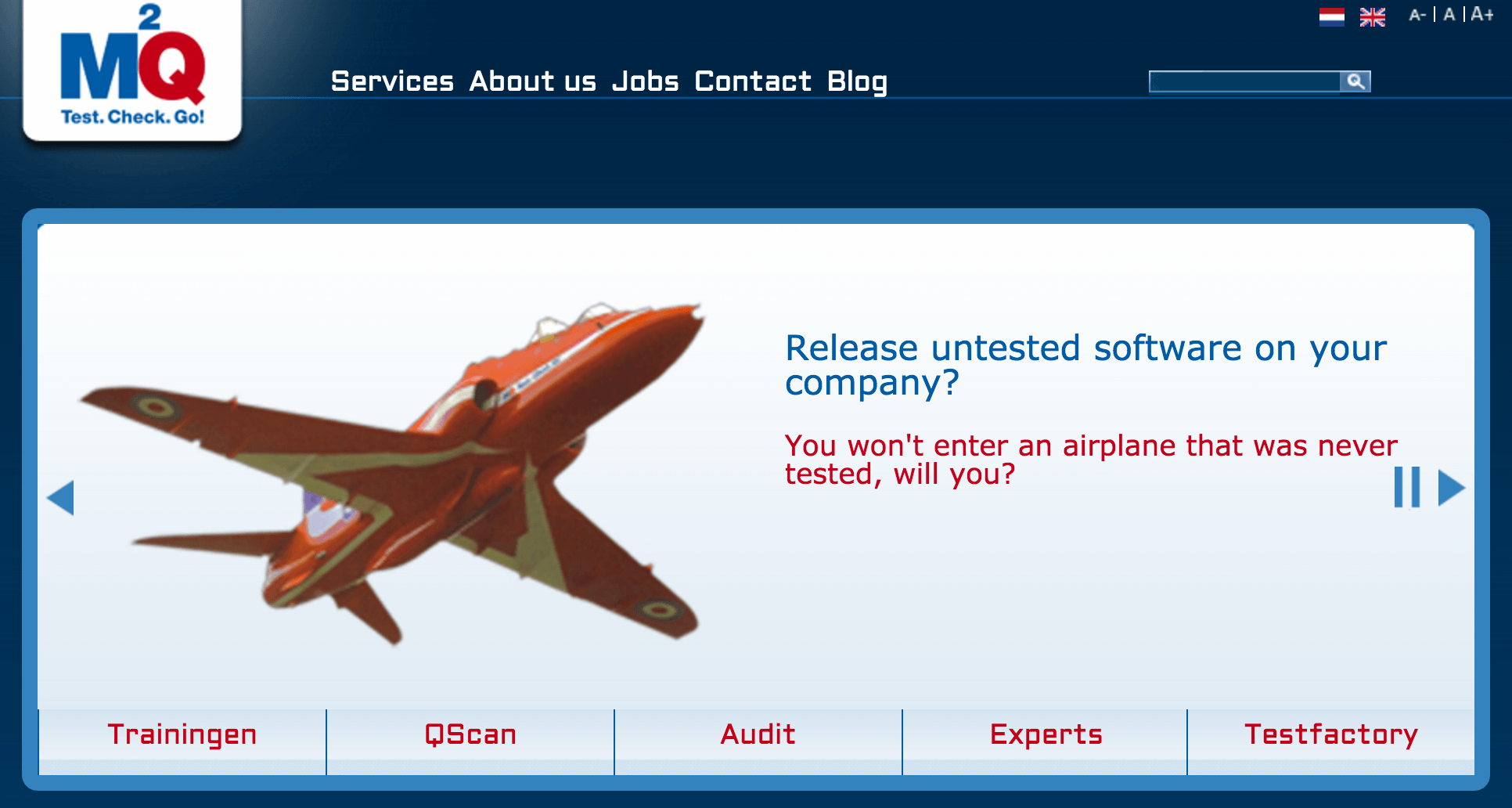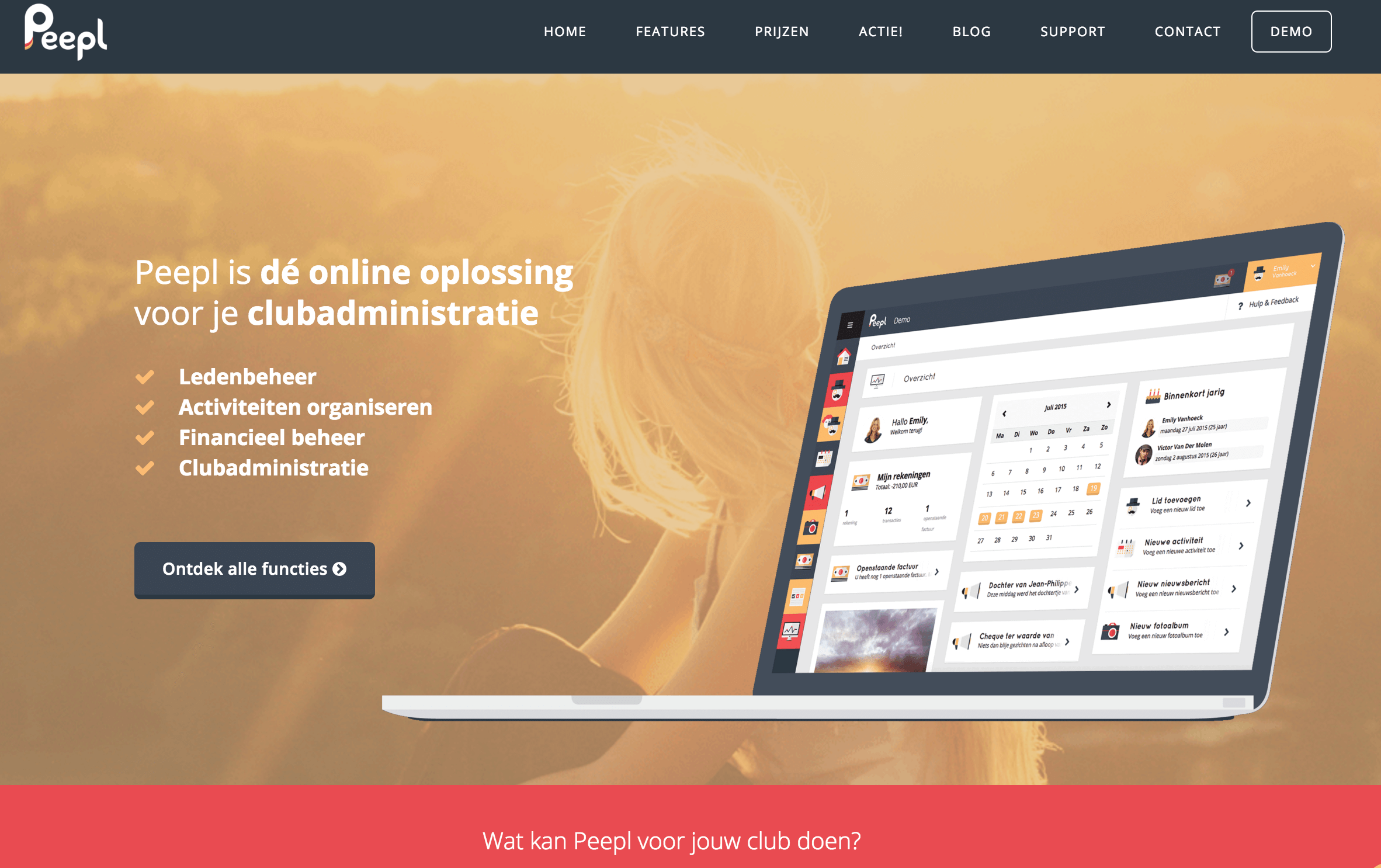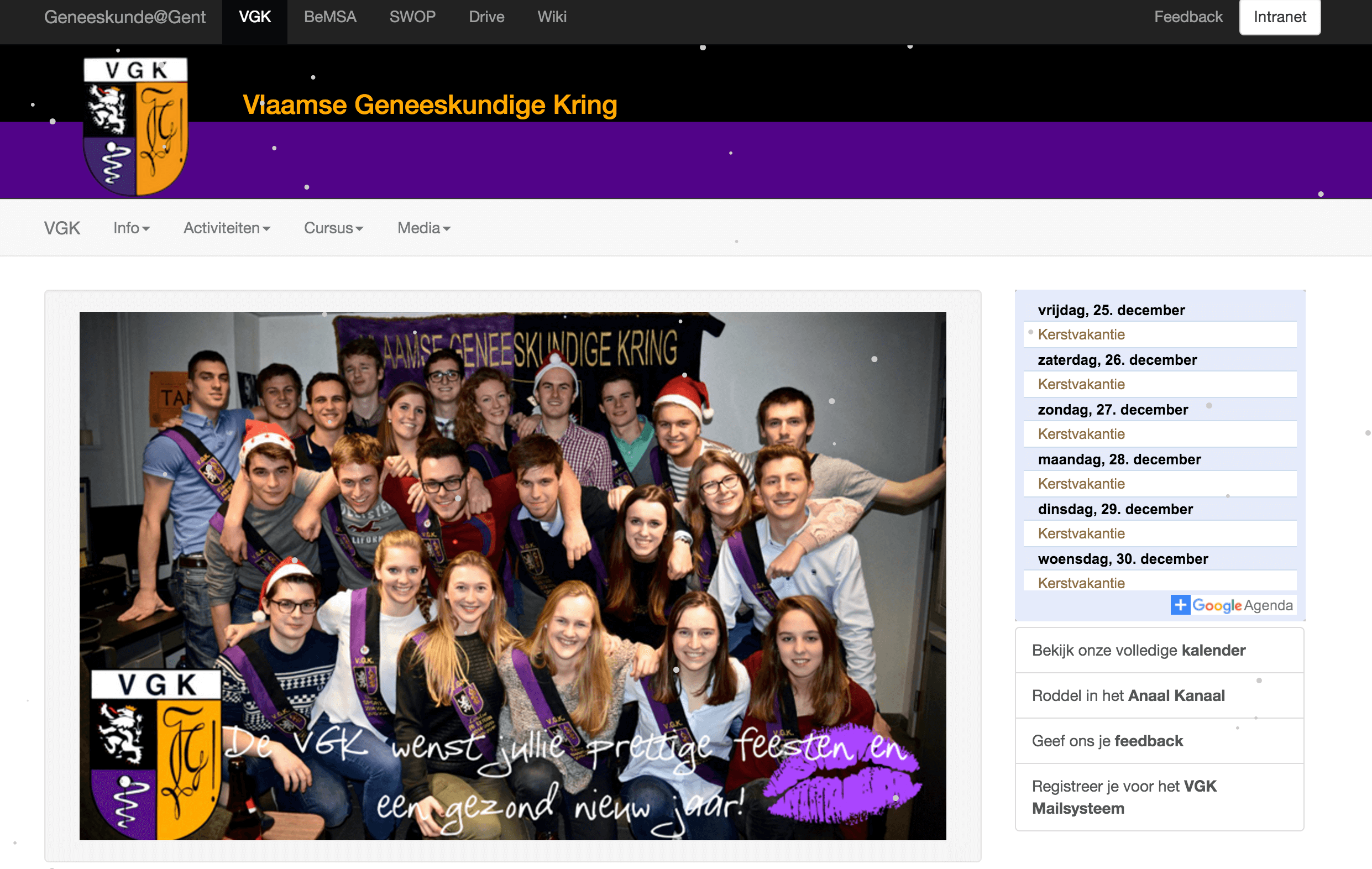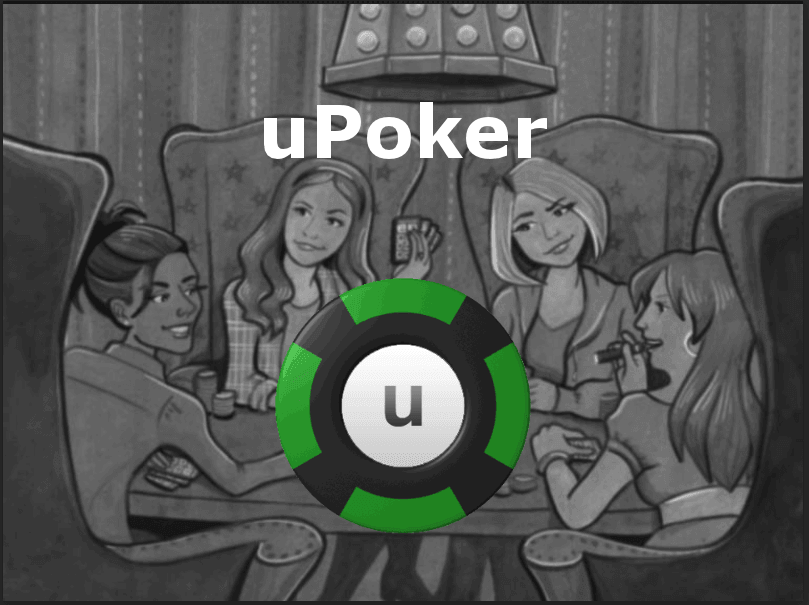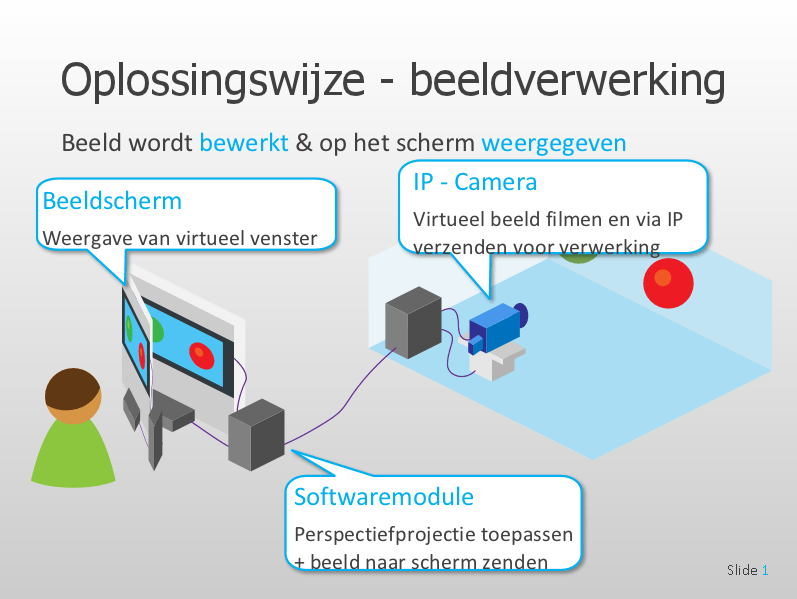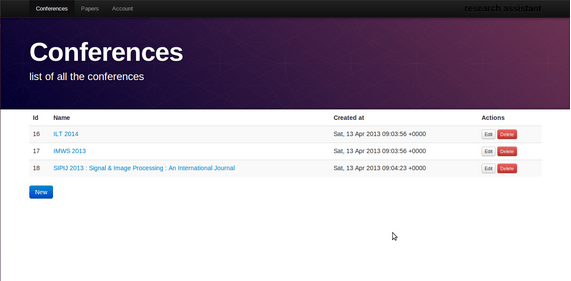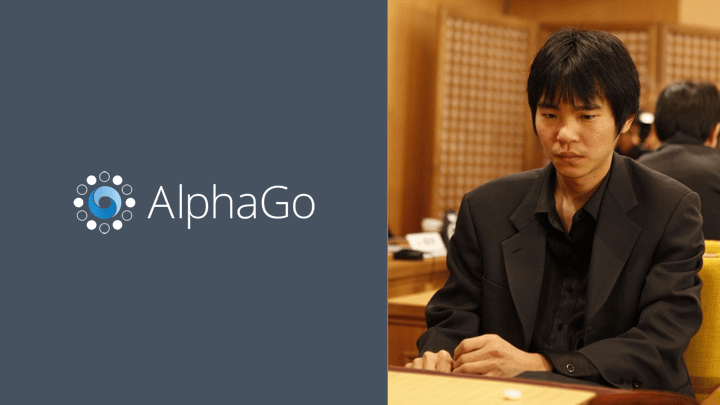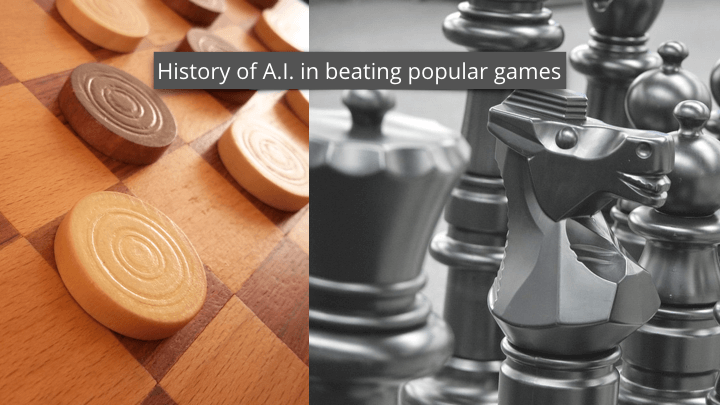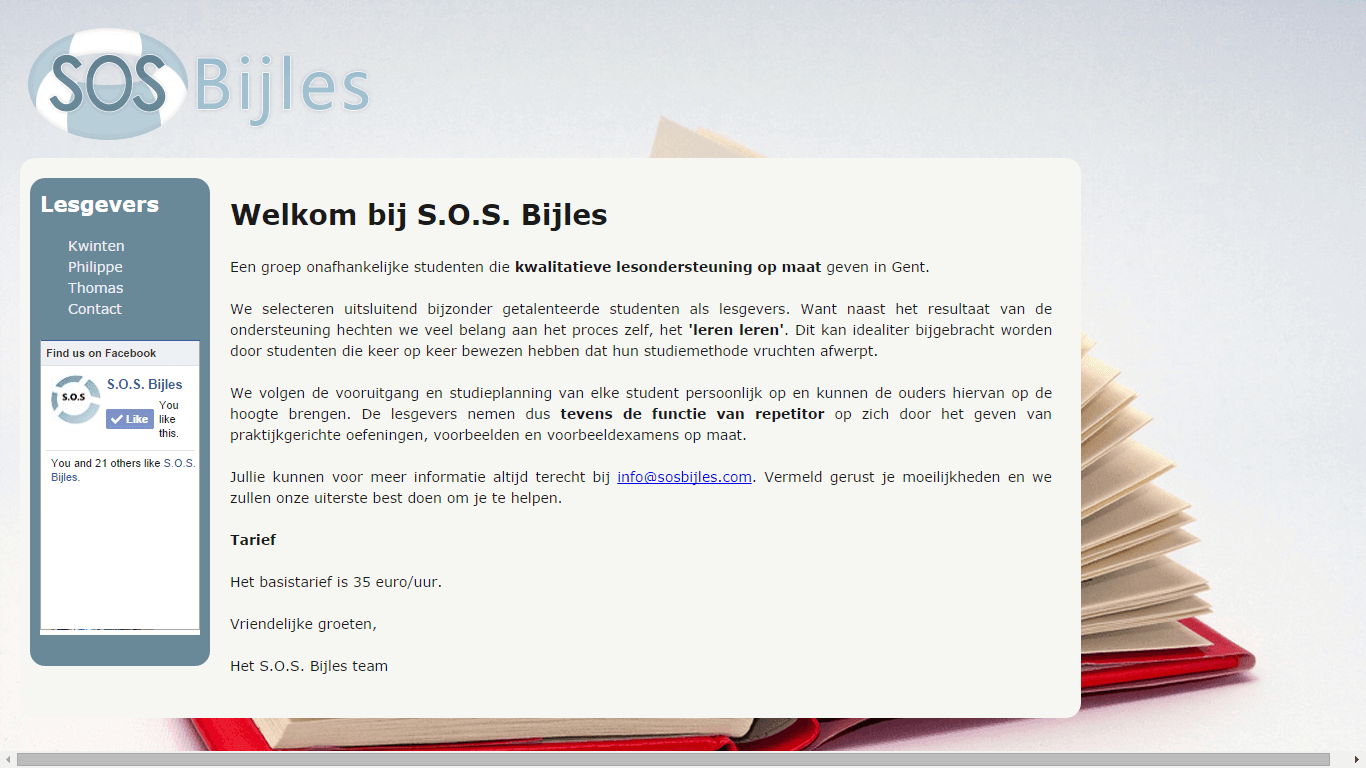S.O.S Bijles
S.O.S. Bijles was a tutoring company for students in high school, university and college. The site was made in Drupal. It was designed, developed and deployed by me.
vgk.be
I gave some advice about starting development in Rails: some good practices and guidelines. I setup a development environment via Vagrant. Since VGK is a non-profit I did this free of charge.
Peepl.be
I gave some advice on Object Oriented Design practices in Python and how certain methods could be refactored to be smaller and more maintainable.
Divavenue
Divavenue is a concept for a start-up by three founders including me. I developed the site based on graphical PSD designs made by a professional and requirements set out by the two other founders. The site is in Ruby On Rails. It connects with a PostgreSQL database, different API's of services like payment and transport. It featured complex models and views. Development was agile and test-driven. I deployed a stage and development version of the site. The production site is still in development.
Neural networks in movie rating prediction
The Internet Movie Database contains a huge amount of user generated data. In this project we attempt to use machine learning techniques on this dataset to predict the scores of movies. This way we create insight in how much the director, actors, etc. affect the overall appreciation of a movie by the audience. We compare the performance of linear regression on the data with that of single layer neural networks. After training these neural networks, some interesting conclusions can be made from the obtained weight matrices.
I did this project together with two other engineers.
uPoker: Ubiquitous poker table
This was a project I did with 9 other students. We engineered the software architecture of a ubiquitous poker table application. The paper explaining the project, the state of the art, the requirements and the proposed solution could be found online at the time of writing this paragraph.
urlAutomatic drawing table
A drawing table that could draw SVG images on paper. I did this project with another engineer. The drawing table used a Dwengo microcontroller, two servo's and some mechanical pieces to make the drawing arm. A self written Java component translated the SVG images into commands understandable by our self written Dwengo software component in C. This component translated those commands in electrical signals that had to be send to the two servo's in order to draw complex geometrical figures.
coosy.syntravlaanderen.be
Freelancer contract to work on Coosy. Coosy is a webapplication used by SYNTRA Vlaanderen. It receives data from different SYNTRA centers and makes it accessible to SYNTRA Vlaanderen employees. Administration related to SYNTRA Vlaanderen objectives is hence facilitated. My responsibility was to fix bugs and develop new features of stories handed over by our functional analyst based on the business requirements of SYNTRA Vlaanderen.
Buurtlink.nl
I was brought as a Ruby on Rails development freelancer on the Buurtlink.nl project, a webapplication with close to a million users. My responsibilities included the development of new deployable features in SCRUM codesprints and management of the current code in between the sprints. Development was full-stack, every developer on the team had the sole and total responsibility over a set of the features. Those features were designed, estimated, validated and tested by the buurtlink organisation and by denkGroot. Hence teamwork and self-reliance was required.
Research paper assistant
A collaborative platform for researchers to write papers. This platform was developed in a team of 4. It is written in Ruby On Rails. It used Bootstrap for design purposes. It compiled latex source to pdf back-end. It generated iCal feeds and notifications for the users. It automatically parsed conference data from popular conference sites. It was made to make the life of researchers writing papers for conferences a little easier.
Virtual window
This project was made by a group of 4 including me. The concept was to make a virtual window. A kinect sensor tracked the movements of a person's body and eyes in C#. A LEGO robot moved an IP-camera accordingly using LEGO software. The images recorded by the IP-camera were processed in OpenCV in C++ and transformed. Our solution gave the user the impression he was looking through a digital window, when the user moved his head the image moved in the natural direction. It was a fun and interesting project.
Gamification in digital books
My thesis addresses generic gamification and its possibilities in digital books. I investigated the feasibility and usability of a generic gamification framework in EPUB 3. This was done by defining three different use cases for digital books and implementing them. Development was done in EPUB 3 (HTML/CSS/JS) to create the digital books. Ruby On Rails was used to create a publisher web application. Python was used to scrape existing content from the web for the gamified cooking book demo (cooking recipes). DBPedia spotlight was used for semantic linking of content.
Future in testing machine learning
M2Q is a Cronos company focused on automated testing of large and complex software. They asked me to consult them on their future in testing of software based on machine learning.
AlphaGo VS Fan Hui/Lee Sedol [30min-1h]
De Nature paper van Google Deepmind overlopen om inzicht te krijgen in de technieken die gebruikt werden in AlphaGo om Fan Hui te verslaan. Bekijken hoe deze verschillen met de 'traditionele' aanpak. Eventuele speculatie over AlphaGo versie 2 die paar maanden later (aka deze laatste twee weken) Lee Sedol versloeg.
Prerequisites:- 'Geschiedenis van A.I. in perfect information games' (idealiter voor de historische parallelen en het verschil in aanpak beter te begrijpen)
- Basis begrip van matrixen en afleiden
- De basis snappen van Go en de complexiteit ervan snappen tov schaken
- Basis begrip over de verschillende componenten van AlphaGo (ConvNet, Supervised Learning, RL, ReLU, Softmax, Policy and Value networks, MCTS)
- Verschil begrijpen tussen de traditionele A.I. en de AlphaGo aanpak in perfect information games
Geschiedenis van A.I. in perfect information games [20-40min]
Heb je altijd al willen weten hoe A.I. 's 'perfect information games' zoals drie-op-een-rij, dammen en schaken aanpakken? Deze talk gaat stap voor stap de geschiedenis van A.I. vs Grootmeesters bekijken. Elke stap leert ons iets nieuws bij over de state-of-the-art technieken van toen (die op elkaar verder bouwen).
Prerequisites:- een minimum en maximum kunnen berekenen
- recursie snappen
- een gezonde interesse voor 'perfect information games' (schaken, Go, dammen, etc...)
- appreciatie voor de geschiedenis van onderzoek
- weetjes over DeepBlue en Chinook
- een A.I. kunnen opbouwen die drie-op-een-rij perfekt kan spelen
- de basis hebben om een A.I. te bouwen die dam en schaakamateurs kan verslaan
Pattern recognition and Machine Learning: Introduction [20-30min]
Een introductie in Machine Learning. Wat is het? Wanneer gebruik je het (niet)? Wat zijn de verschillende technieken?
Prerequisites:- interesse voor een data-driven algoritmische aanpak
- weten wanneer je best ML inzet
- een basiskennis over de verschillende groepen van technieken
Data Gathering for Supervised Learning [20-30min]
Een talk die focust op het data aspect van Supervised Learning. Verschillende use cases worden beschouwd en geïllustreerd aan de hand van echte voorbeelden.
Prerequisites:- een basis kennis van Machine Learning en meer specifiek Supervised Learning
- weten hoe je data er idealiter uitziet voor supervised learning
- een data-strategie kunnen uitwerken om een supervised probleem aan te pakken
- op de hoogte zijn van een paar data-valkuilen
